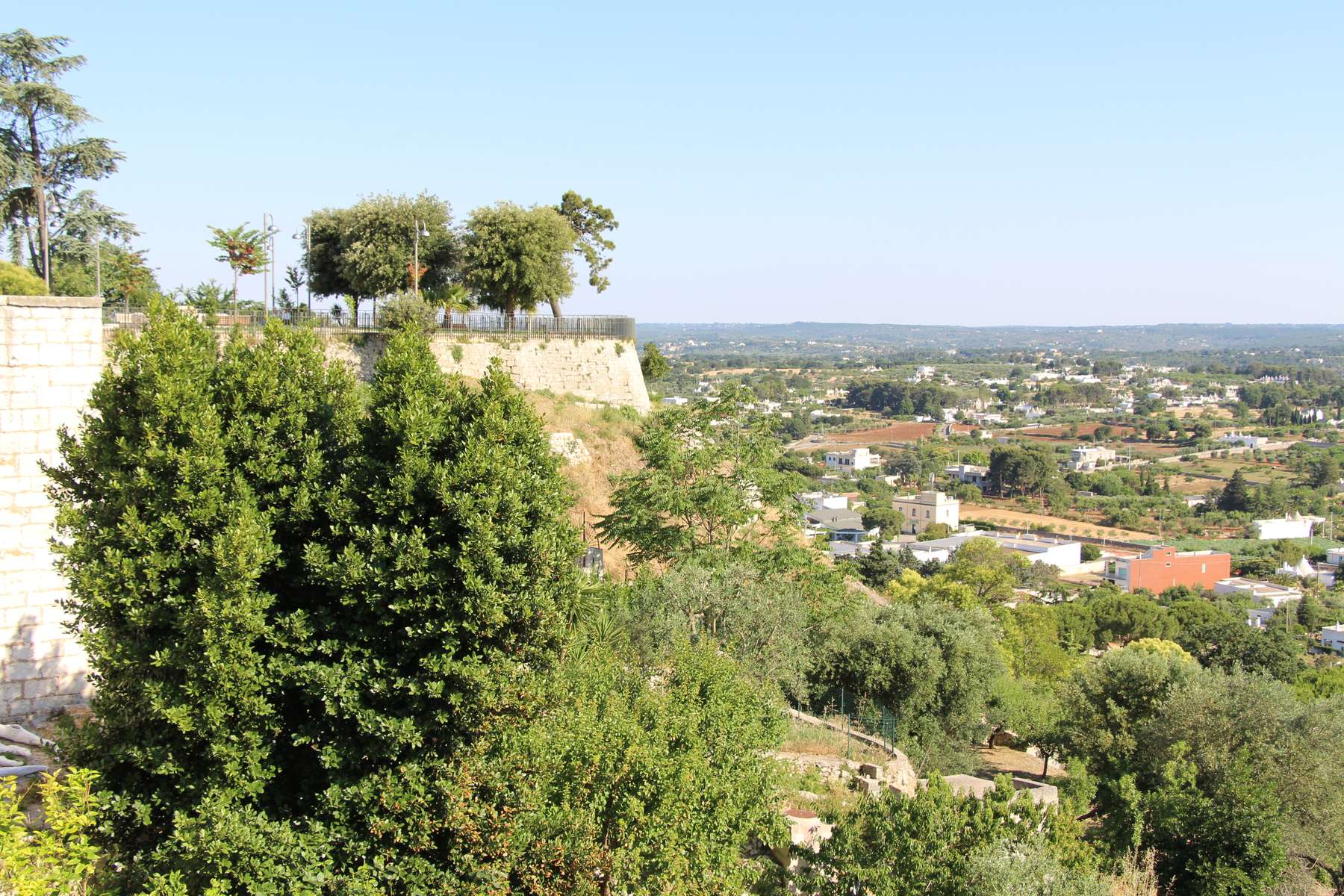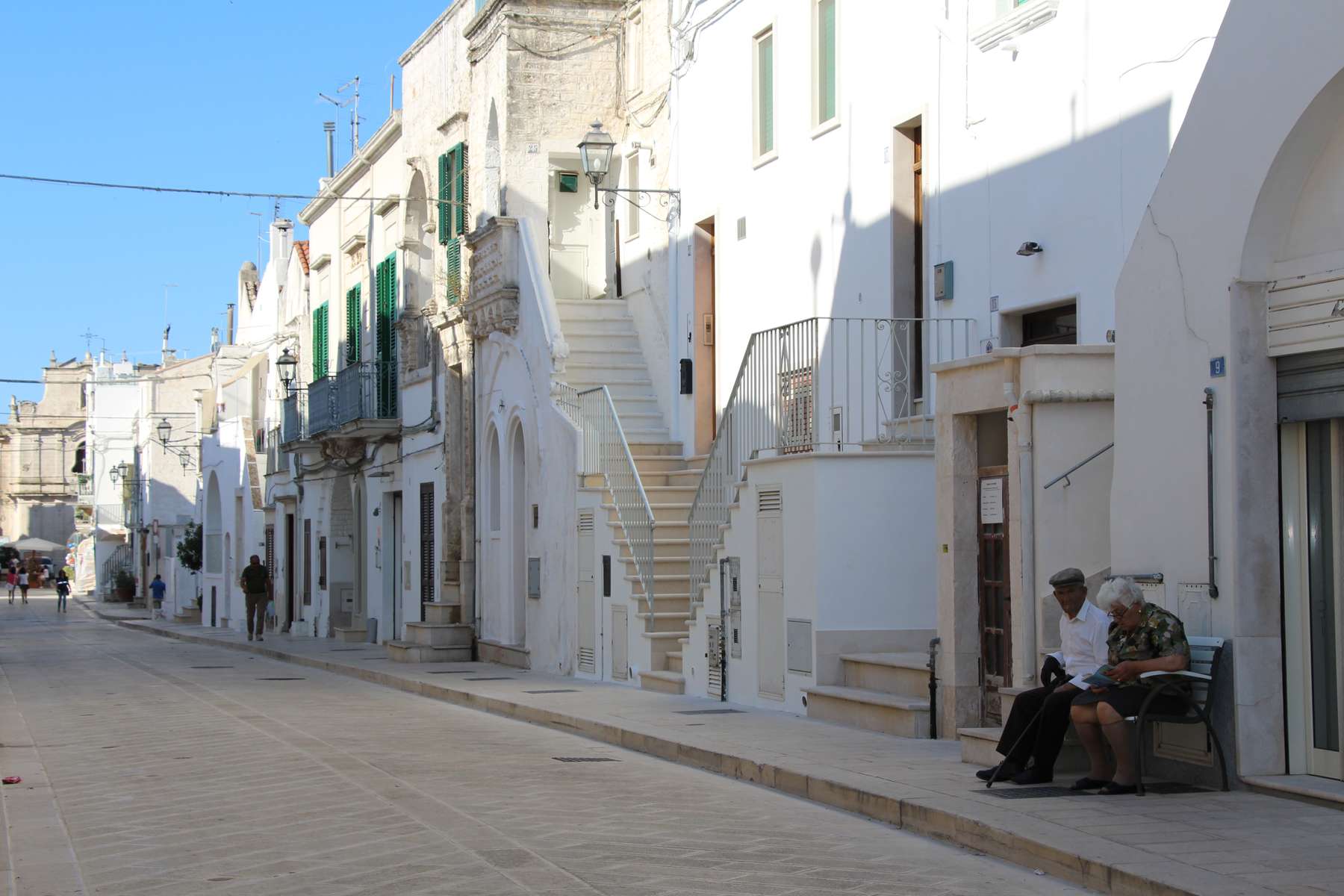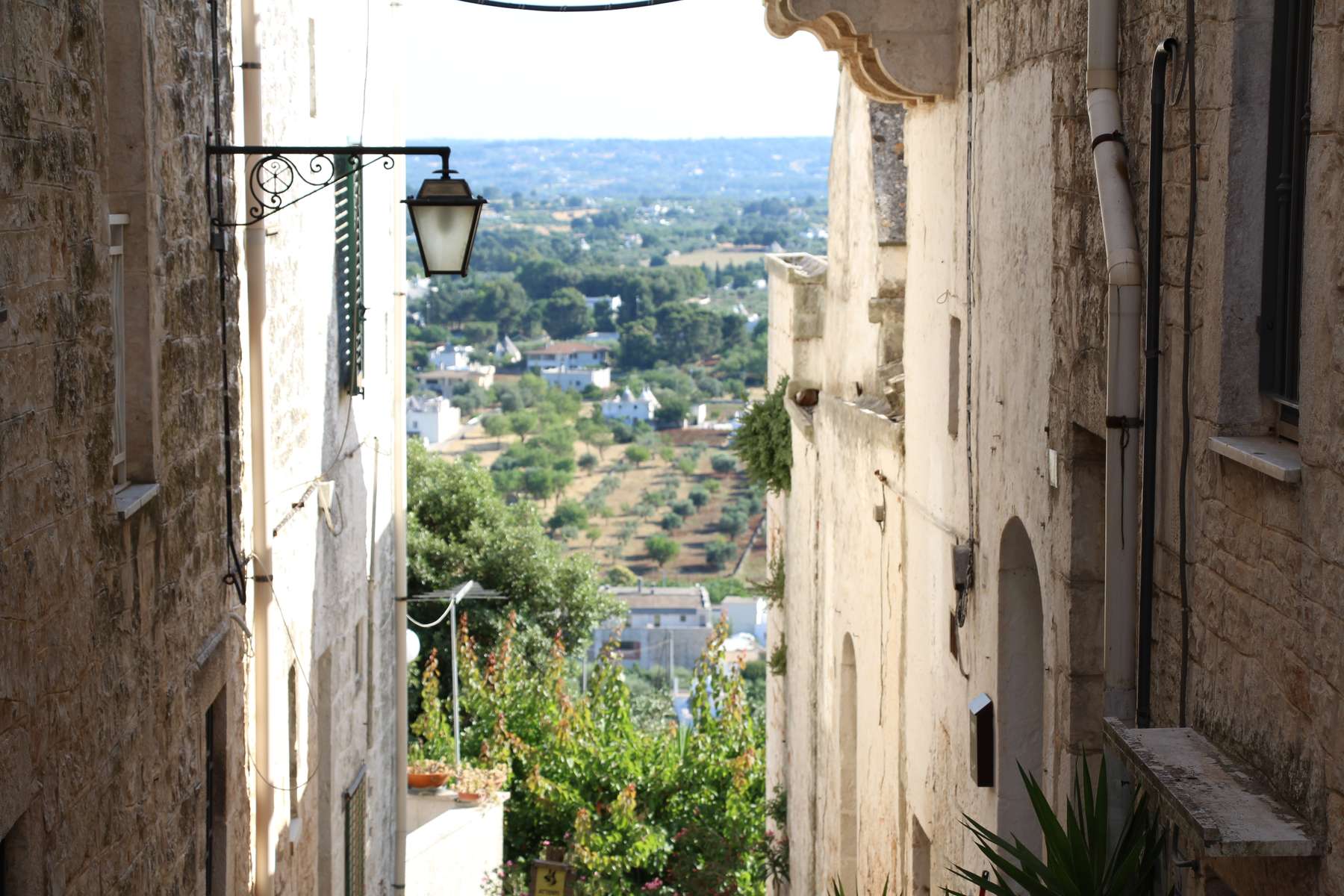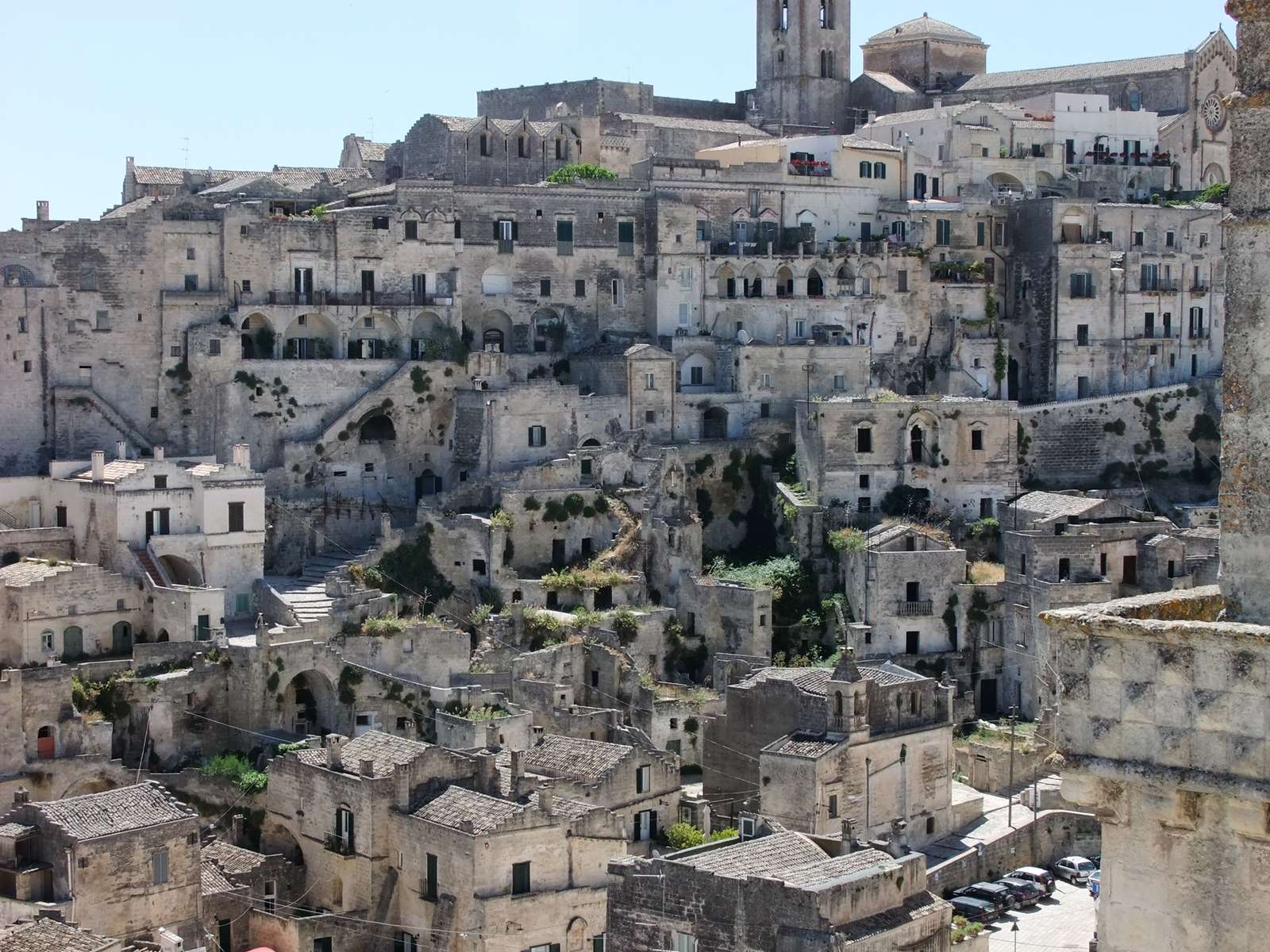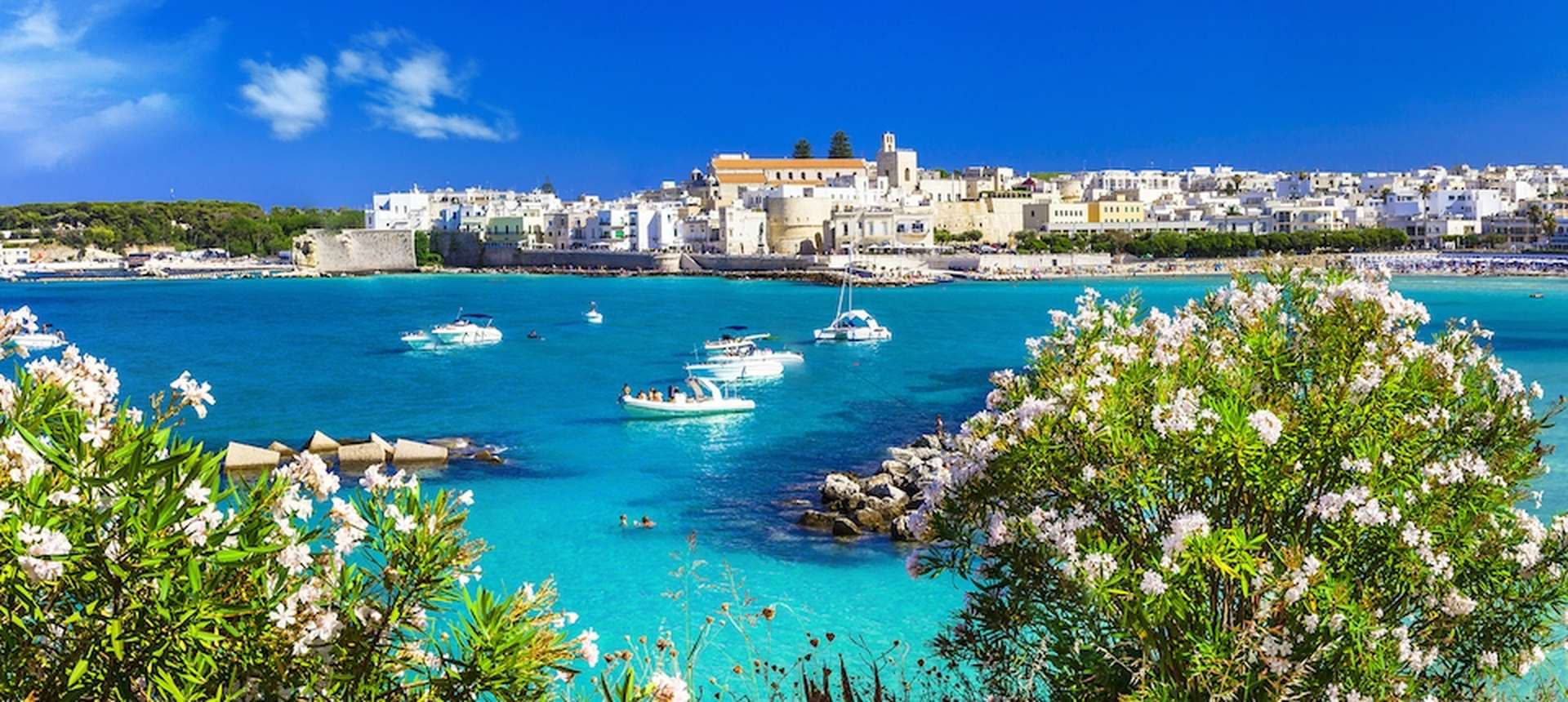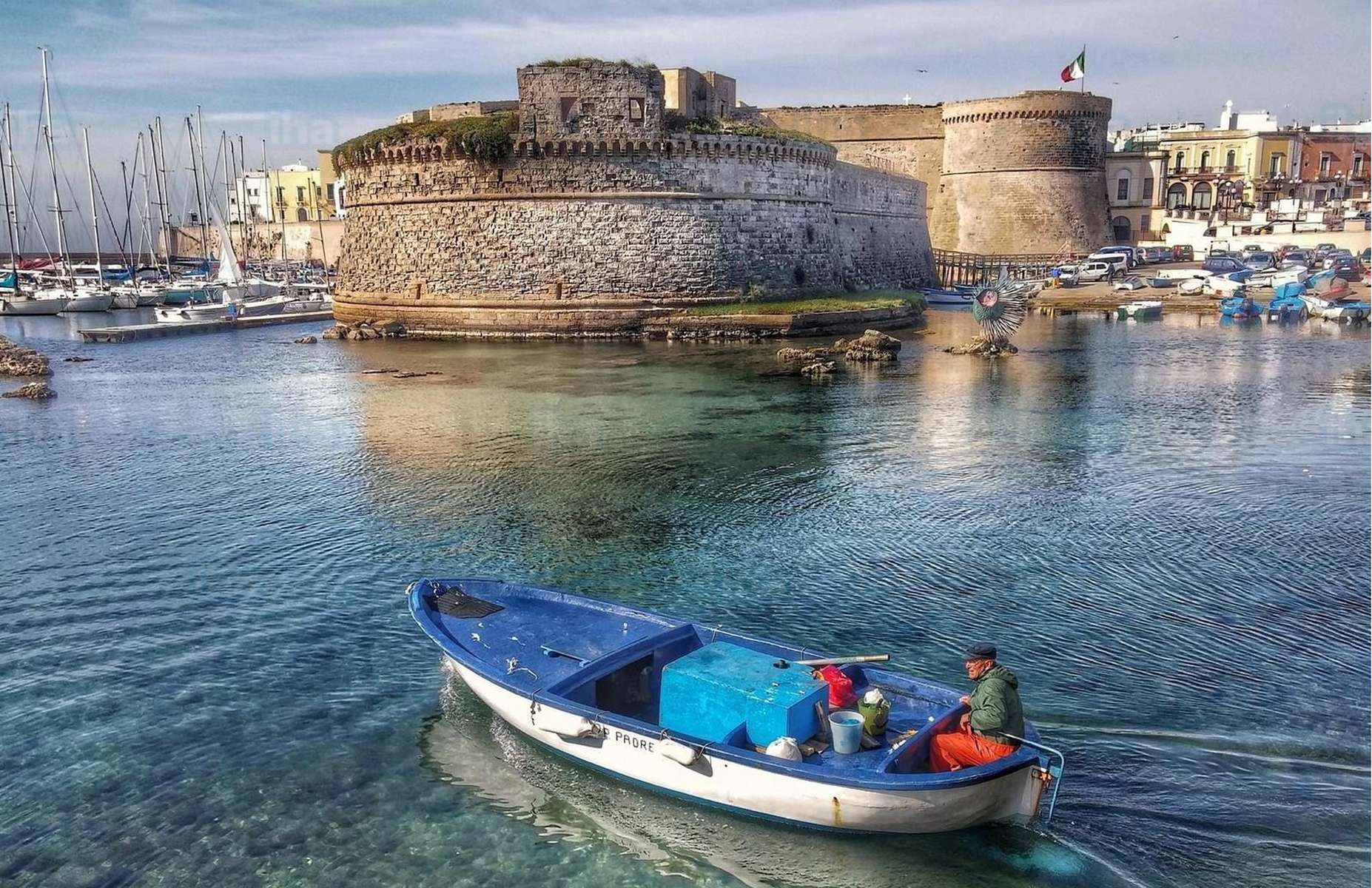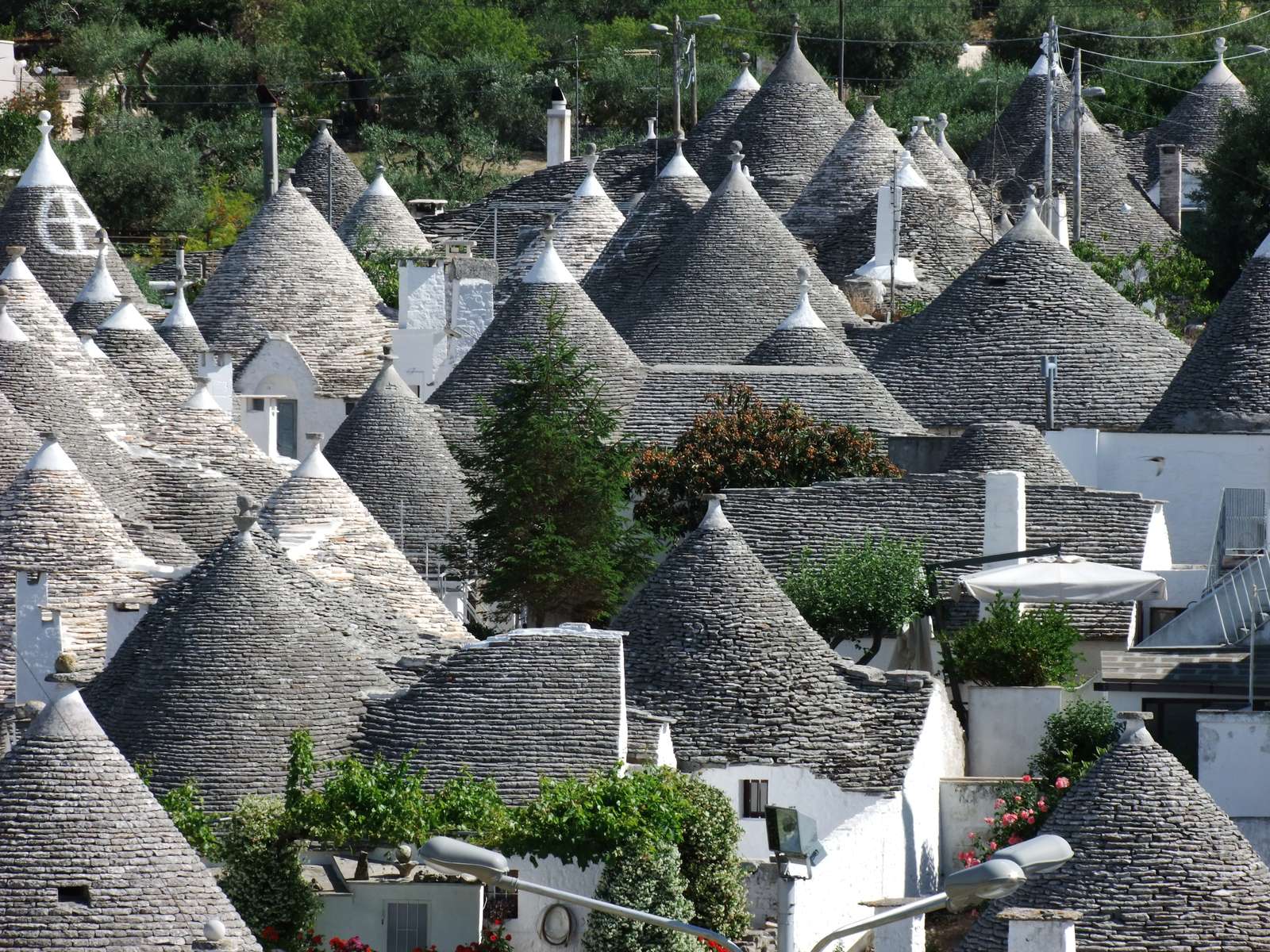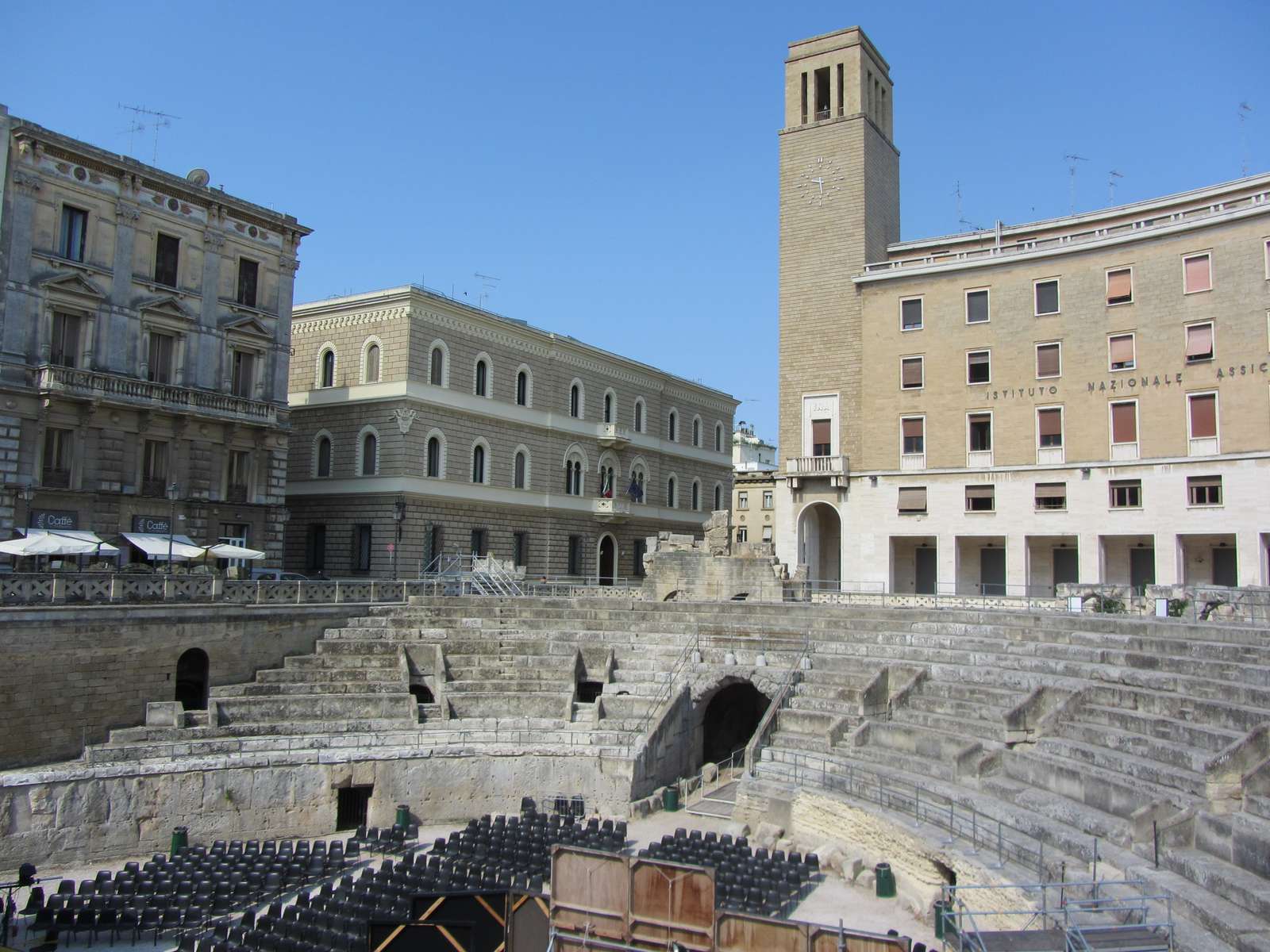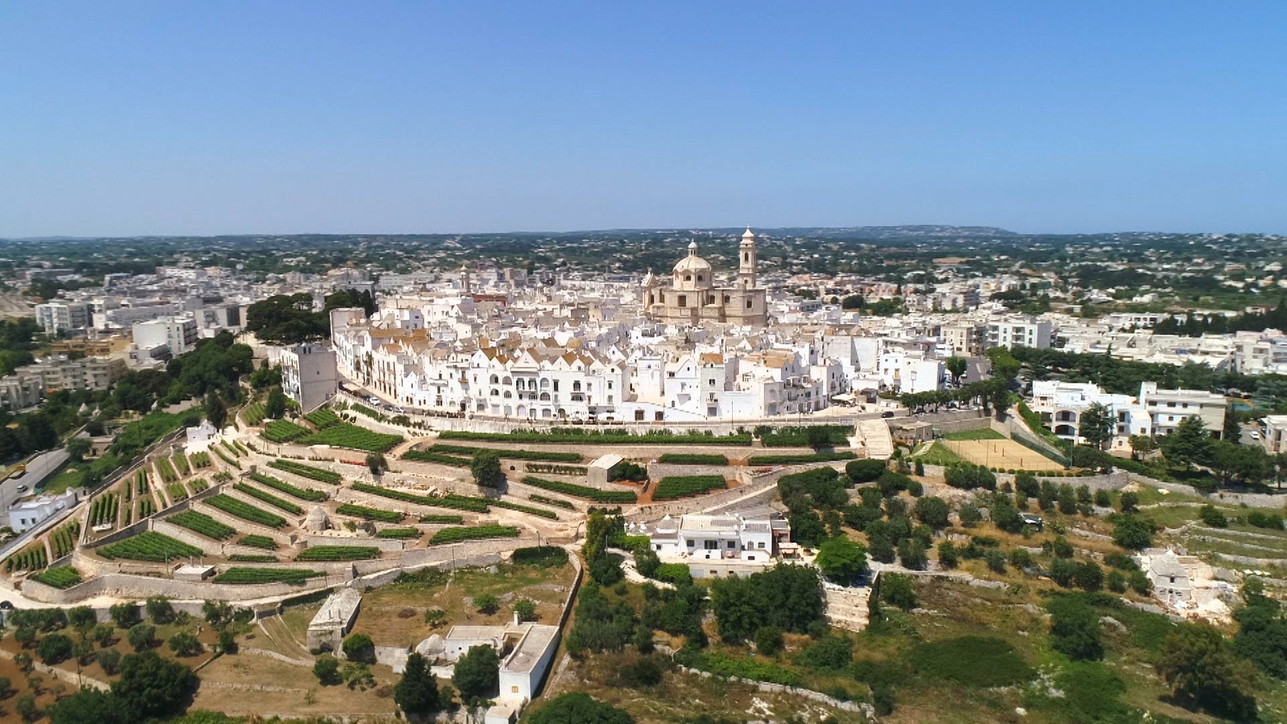35 minutes from Trullo della Pace
The country, in a hilly position (394 meters above sea level), overlooks the splendid Itria Valley, cradle of the trulli’s architectural culture.
The best thing to do in Cisternino is wandering around the country’s narrow streets.
Then when you come to the Chiesa Madre di San Nicola is worth a visit and take a look: the Renaissance has left some artistic traces in this church, by the artist Stefano da Putignano.
A photo deserves the sweeping view of the Itria Valley that enjoys from the great “terrace” located along the main street of the village.
To visit:
Chiesa Madre di San Nicola
The main and the most beautiful church in Cisternino is the Mother Church of St. Nicola of Patara, not far from Pizza Garibaldi, which was erected on the site of worship of the Basilian monks, but which has changes and remodeling altered the primitive medieval appearance.
WEB: http://www.visitcisternino.it/it/scopri/chiesa-madre-di-san-nicola-di-patara-053.html
Clock Tower (Torre dell’orologio)
The tower was built in 1850 by the Alberobello’s “Curri” masters.
The façade, divided in multiple orders, has different openings and the clock is all crowned with a groove, defined by a curved frame, with a metal pinnacle.
Address: Via Tarantini, 2-19 – 72014 – Cisternino
Palazzo Vescovile
The palace was built in 1560 by the bishop of the period, F. O. Preconio and was expanded by his successor, Bishop A. Porzio, in 1583.
WEB: http://www.visitcisternino.it/it/scopri/il-palazzo-vescovile-049.html
Santuario della Madonna d’Ibernia
About 3 km from the town of Cisternino, in the direction of Monti, there is the famous XII century Romanesque Iberian Madonna Shrine, built on the remains of a pre-existing basilic cenobio built not far from the Roman temple devoted to the goddess of fertility Cybele.
